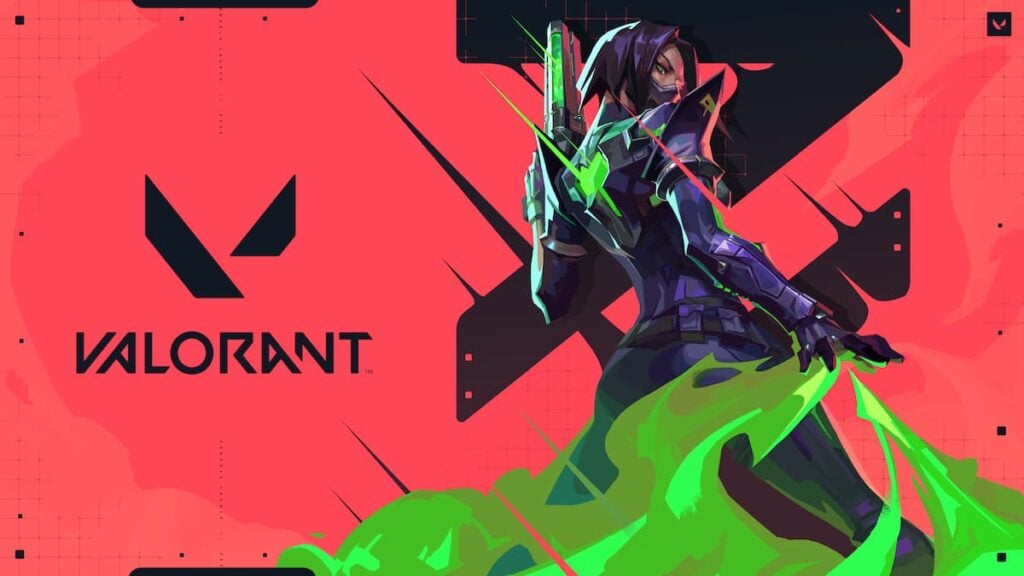Skip To...
What is left to say about Valorant’s brilliant ascension to tac-FPS and esports dominance since 2020? The awesome iteration of Counter-Strike’s beloved 5v5 plant/defuse gameplay has seen its popularity explode, and its esports program has quickly established itself as a must-see competition. Valorant has dethroned the competition and looks set to stick around for a very long time to come. But Riot Games has always had even greater ambition. Not content with muscling its rivals off the scene on PC, the developer hasn’t been shy to admit its eyes are set on other platforms. Up until recently, the extent of those efforts seemed limited to a mobile launch, but a console port was revealed at Summer Games Fest back in June.
Now having launched properly across PlayStation and Xbox, I’ve finally had a chance to play it for a meaningful amount of time, and I find myself once again blown away by what Riot has put together.
No Mean Feat
On paper, launching on consoles sounds like clever business. There’s a huge untapped audience who love FPS games but likely have never played anything like Valorant. But executing a tactical shooter on a controller is easier said than done. The sort of precise aiming it demands has never translated well to sticks — remember Counter-Strike: GO on console? Neither do I.
That’s a joke, of course. CS: GO on console was a total disaster, and there’s been a legacy of PC-centric shooters that have similarly failed to make an impression. That’s mostly because they played poorly, but also because the developers of those games simply weren’t able to pivot to the platform’s demands. You don’t want a like-for-like port; you need innovation to get it running suitably on a gamepad — and innovation is something Riot has a track record of delivering, and it’s proved that once again here.
Indeed, Riot Games’ historical focus on PC gaming makes the quality of this console adaptation even more impressive. Rather than slap the PC game straight onto console and let players have it, Riot has clearly poured quite a bit of time into ensuring console newcomers get off on the right foot. This is absolutely a tailored experience designed to meet the needs of console players.
That starts with an all-new tutorial. Unlike the PC version, which assumes a basic understanding of tactical FPS mechanics, the console tutorial is more comprehensive and accessible. It walks players through essential gameplay elements, from aiming and movement to using abilities effectively. I like this hands-on approach, which feels perfect for console players who may be new to the genre, ensuring they grasp the fundamental concepts before diving into matches.
Focus Your Mind

Now, the elephant in the room. As I alluded to earlier, adapting Valorant’s precise, tactical gameplay for controllers is a monumental task, but Riot has largely succeeded. That’s down something it has dubbed “Focus Mode,” which at the tap of a button allows for slower, more accurate aiming. It’s not ADS –that occurs separately– but rather a slowing of the stick movement for hip-fire when needing accurate shots — which is almost all the time in Valorant. This feature bridges the gap between the precision of a mouse and the versatility of a controller; as a result, the console version doesn’t feel compromised. The ability to walk by lightly pressing the left stick requires careful dexterity and some getting used to, it has to be said. I think if you’re serious about Valorant on console then a third-party device with paddles and other functionalities might be the way to go.
Indeed, there are some quirks in the button layout that may feel unconventional. For instance, aggressive abilities are often mapped to the left bumper, which might feel counterintuitive for players accustomed to traditional FPS controls. Again, something third-party is probably the way to go if you want ultimate fidelity, but it’s not a deal breaker using a standard gamepad.
Elsewhere, the console version of Valorant saw a new streamlined UI implemented (which has since been included on PC). This design has reduced clutter and makes navigation straightforward. In-game, the buy menu has been re-arranged for quicker access to essential items, although the request menu still requires a separate button press, which could be streamlined further.
On the technical front, Valorant performs solidly on the PS5, maintaining a stable frame rate and delivering crisp visuals. However, console players are limited to 120 FPS, which, while sufficient, obviously falls short of the higher frame rates achievable on high-end PCs. Another challenge is the presence of XIM adapters, devices that allow keyboard and mouse usage on consoles. Riot’s anti-cheat system is actively addressing this issue, but it remains an ongoing battle. In my time with the game I felt as though I only encountered one or two users, though, so it’s no major issue.
As for new gameplay features, well, there aren’t too many — and that’s totally fine. Valorant on console retains the core gameplay dynamics that have made it a standout on PC. The round-based format, requiring teams to either plant or defuse a bomb, translates well to the console environment. The gunplay remains intense and rewarding, with precise aiming and strategic positioning being key to success. As is the case on PC, Riot has also included a variety of customization options, allowing players to fine-tune their controls, crosshair, and sensitivity to suit their playstyle.
Won the Battle, But Potentially Not the War?

Despite minor issues, such as the unconventional button assignments and the 120 FPS cap, Valorant’s console version offers a tac-FPS experience you simply can’t get elsewhere. The thoughtful adaptations and quality-of-life improvements demonstrate the publisher’s commitment to delivering a high-quality product, just as it is likely to do for mobile. For experienced players like myself, the transition to console took a little getting used to but was surprisingly simple. I wouldn’t say I’m a console convert by any means, but I’ll still be jumping back on PS5 for the occasional ranked game — something made more desirable by the fact that progress carries over from platform to platform (though there’s no crossplay, thankfully).
Overall, then, the successful console launch is a testament to Riot Games’ ability to adapt its flagship tactical shooter for a new platform without compromising its core identity. There’s really no better way it could have been handled. Still, the wider question is whether console players, who typically prefer more casual gameplay experiences, gel with it to the extent that it becomes popular. In an industry segment dominated by Call of Duty, Battlefield, et al, it feels less about how good Valorant is but how much of a demand there is for a game like Valorant. Beyond just the technical difficulty of implementing such a game on console, the greater challenge is finding the audience to play it. Therein lies a much greater challenge potentially beyond the control of even a developer as big as Riot Games. I’ll be keeping my eye on its progress.
Valorant PS5
A testament to Riot Games' ability to adapt its flagship tactical shooter for a new platform without compromising its core identity
Pros
- Clever Focus Mode that bridges the gap to mouse and keyboard
- More or less technically flawless in terms of performance
Cons
- Minor inconveniences with button layouts







